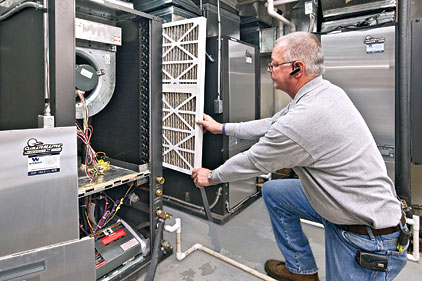The North American geothermal market claimed $102.8 million in revenue in 2012, and is expected to reach $147.6 million by 2017, according to Frost & Sullivan, a San Antonio-based market research and analysis firm.
With heating and cooling accounting for 40-50 percent of power consumption in nonresidential buildings, the report highlights the urgent need to increase overall energy efficiency in those buildings.
“Geothermal heating and cooling is an excellent way to conserve energy while employing the earth as the chief energy transfer base,” said Konkana Khaund, energy and environment industry manager, Frost & Sullivan. “Despite its huge initial costs, its higher energy efficiency and long-term cost savings are capturing the attention of environmentally conscious end users.”
The study period is from 2009-2017, with the base year being 2012. The forecast period for the study covers 2013-2017. The report identifies open- and closed-loop geothermal heat pumps as the two key segments in the North American geothermal heating and cooling markets.
The report acknowledges that the U.S. and Canadian markets will get a boost from legislation such as the Energy Policy Act of 2005 and the Energy Independence and Security Act of 2007, which mandate at least a 30 percent increase in energy efficiency over existing levels.
The industry, though, is hurt by the large capital investment typically required to install such a system. “Nonresidential users are in a better position to invest the capital and gain strong returns on investments in just a couple of years,” said Anu Cherian, senior industry analyst, Frost & Sullivan. “However, most end users are inclined towards ‘short-termism’ and do not perceive the long-term benefits of investing in this technology.”
The frugal spending of end users isn’t the only challenge the market is facing. The report also makes note of price wars between manufacturers in what they call a highly competitive industry.
For manufacturers to differentiate themselves from each other, they need to educate potential end users about life cycle cost savings that can be accrued by investing in geothermal technologies, and how installing energy-efficient products, such as geothermal, will make building owners eligible for tax rebates and incentives, stated the report.
Geothermal heating and cooling technology’s biggest benefits are expected to attract customers from across many different segments, concluded the report. Some of the benefits geothermal systems bring are long life cycles, reliability, decreased energy costs, the ability to comply with energy-efficiency requirements, and a positive environmental impact.
Information provided courtesy of Frost & Sullivan, a San Antonio-based market research and analysis firm. For more information, visit www.frost.com.
Publication date: 11/4/2013
Want more HVAC industry news and information? Join The NEWS on Facebook, Twitter, and LinkedIn today!


Report Abusive Comment